A Comparison of IOT and CLS
The predictions below were generated using NIR spectra of acetaminophen (API) and excipient mixtures measured in GEA PAT Stack using a SentroPAT FO with a SentroProbe MS7 probe. The spectra were preprocessed the same way1. The data is from a collaboration with our friends at GEA and BASF; a citation for the publication this data is from can be found in the foot notes.2
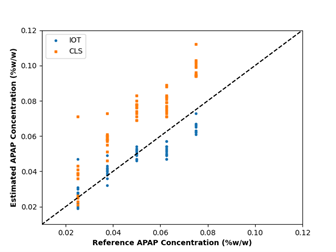
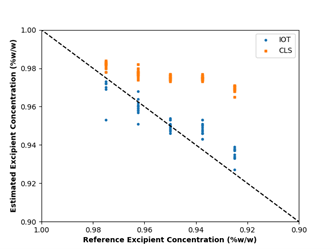
As can be seen, the IOT predictions are more accurate than the CLS results, which have a clear bias in their API predictions. Let’s look at the sum of the excipient and API spectral contribution weights (we interrupt these as mass percentages):
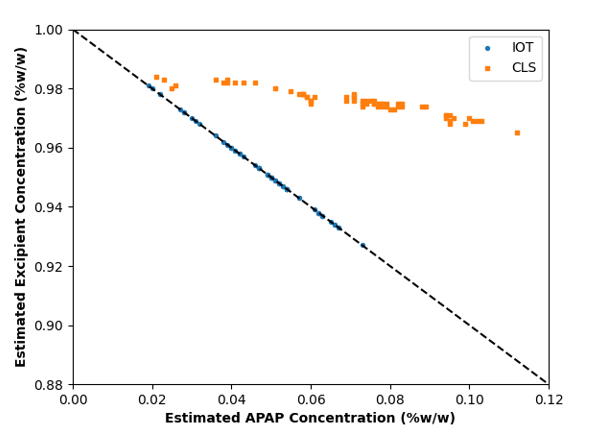
You can see that the IOT results always sum to one, as expected by the constraints. In contrast, the CLS results have a total mass percentage greater than 100%. What happens if we just scale each of the CLS predictions by its summed spectral contributions?
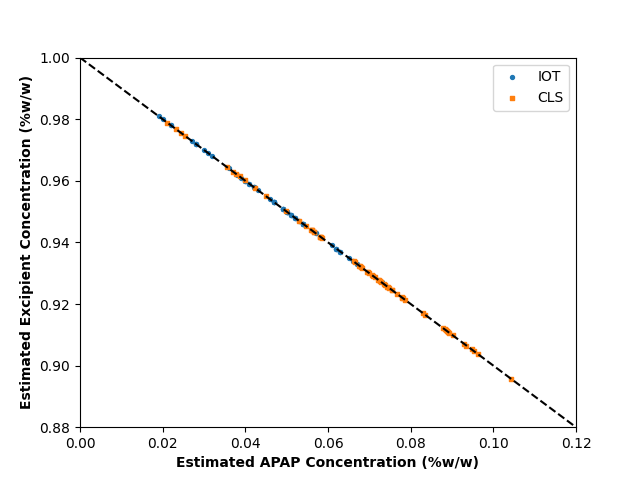
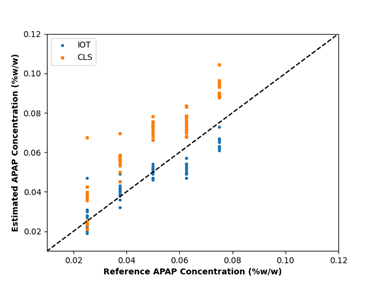
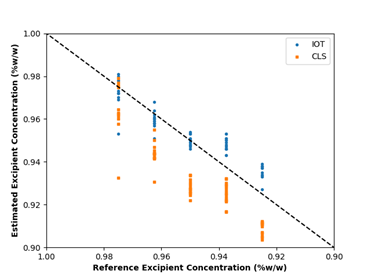
The CLS predictions improved, but are not as accurate as the IOT predictions. Why is that? Let’s look at the sum square of the spectral fit residuals (SSR):

CLS has the same or lower SSR for all samples. This is likely the result of IOT getting a similar, but slightly higher, error of fit for the same samples to minimize its error of fit under constraints rather than just minimizing the error of fit unconstrained3. Despite the higher fit error, IOT is able to generate a more accurate result, indicating that violations of assumptions in CLS (e.g., linear additivity, non-negativity of concentrations) may be being violated. By constraining the algorithm, IOT is generating predictions that better match reality.
Summary
I hope this blog post was helpful for those of you, like me, who struggled to get CLS to work and have been skeptical that IOT is just CLS with some minor tweaks. While there are small practical differences between IOT and CLS (and larger theoretical ones), they add up to big results!
1) It should be noted that this preprocessing was optimized to minimize the error in IOT concentration estimates. Different spectral preprocessing may show different relative IOT and CLS results
2) Rish, Adam J., et al. "Evaluation of Calibration Burden for Monitoring of a Pharmaceutical Continuous Manufacturing Line using Near-Infrared Spectroscopy." International Journal of Pharmaceutics 673 (2025): 125419.
3) It should be noted that IOT run without constraints generates the same results as CLS for these spectra.
